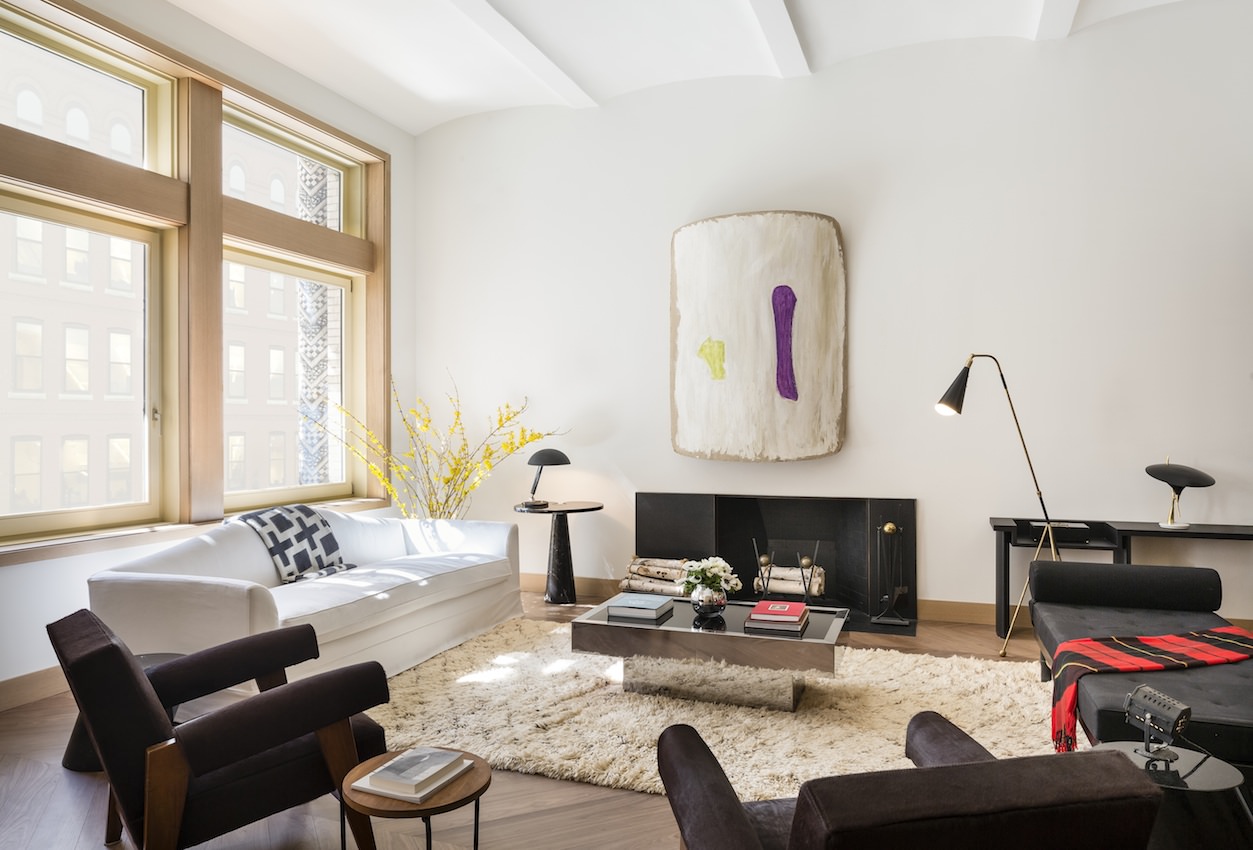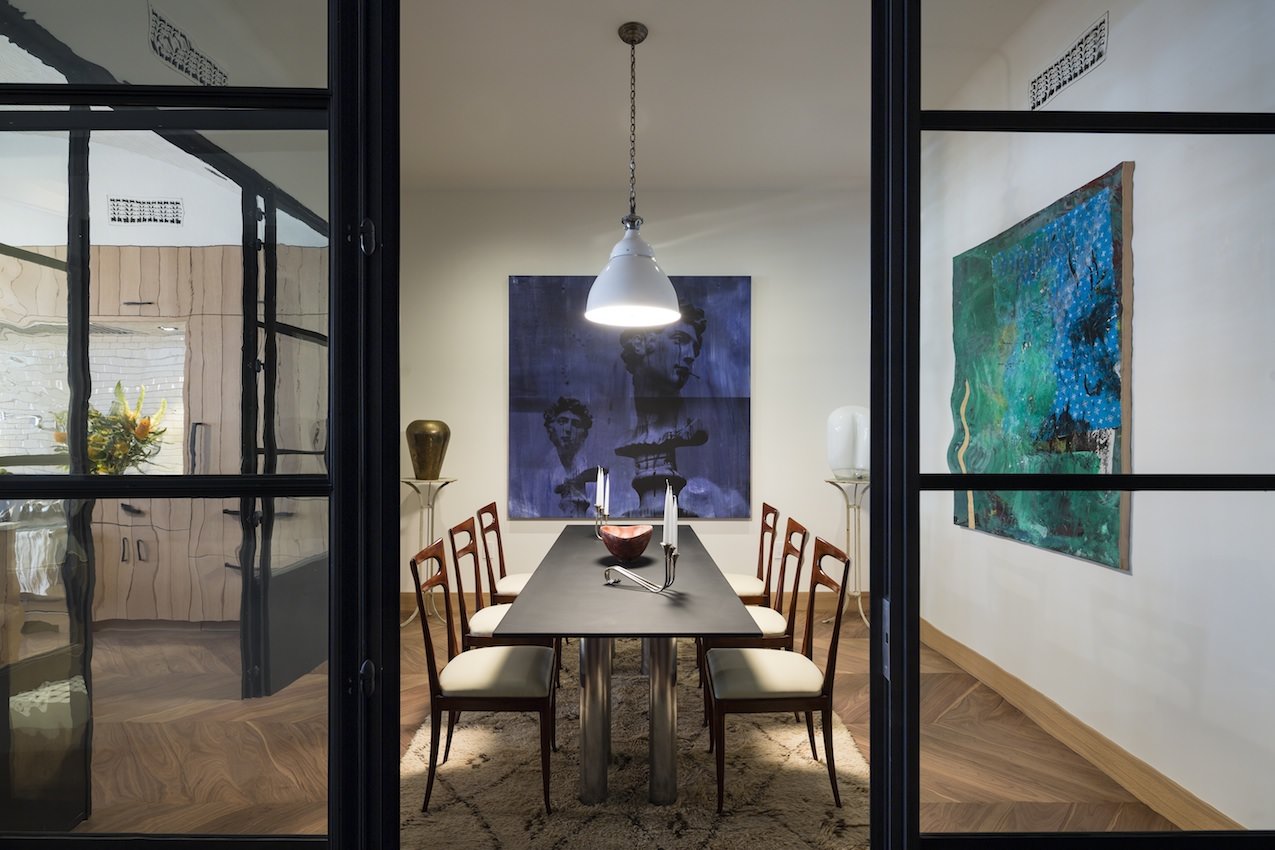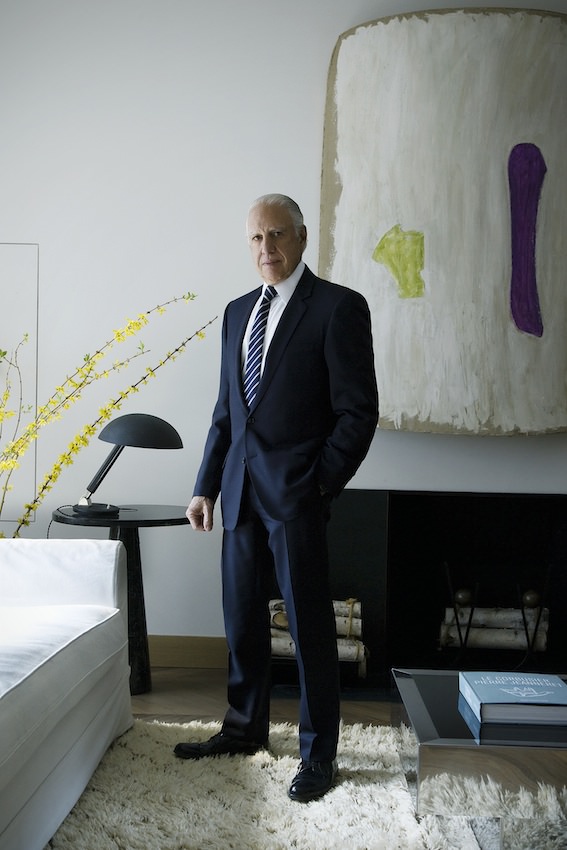Read Whitewall‘s summer 2015 Design Issue interview with New York real estate developer Edward J. Minskoff.
WHITEWALL: As president at Edward J. Minskoff Equities Inc., you typically develop buildings with many millions of square feet, including the seven-million-square-foot World Financial Center. The six-unit residential development at 37 East 12th Street must be one of your smallest projects to date.

Portrait by Steve Benisty
EDWARD J. MINSKOFF: This is the smallest I’ve ever done.
WW: How did it happen?

Portrait by Steve Benisty
EJM: It was an accident. We happened to be offered the property, and timing-wise it just fit in to everything else we were doing. Everybody that has worked on it has had a lot of fun, and so far there has been an outcome we’re comfortable with. It’s turned out pretty nice—the flooring, the finishes, they’re all really exceptional compared to other residential buildings in the last two or three years.
WW: Do you typically have a vision for your developments before you begin?

Portrait by Steve Benisty
EJM: Pretty much. I don’t think I have a be-all, end-all cure, but I think I have a pretty good instinct of what belongs in whatever location we’re working with. There have never been two buildings I’ve ever done that are even remotely similar. We work with different architects every time. In this building, we had good bones to start with. It was a commercial building, Kentshire Furniture, for forty years.
WW: How would you describe the aesthetic of this development?
EJM: Modern cool? I don’t know! It is a combination of a classic look and modern look. Each element is custom. The big windows in the front, they’re all custom made. We like to create big openings to bring in the light because it’s on the north side of the street, so we get great afternoon light. It’s not something we could pull out of a book. Every little stone was customized for this building.
WW: I hear you incorporate art from your extensive contemporary collection in each of your developments. Do you feel it’s safe in those public spaces?
EJM: You basically only insure art for casualty. Art is not fungible; it’s valuable but not fungible. You can’t steal art and then resell it. We are basically insuring art for damage and we have security in every building. At 51 Astor Place we’ve got the fourteen-foot balloon red rabbit, probably one of the great pieces that Jeff Koons ever did. If you walk around the corner on the plaza there is a spectacular fourteen-foot-tall Keith Haring, too.
WW: How do you decide which art to put in each building?
EJM: I follow my gut. In this case, the only art from my collection will be in the lobby. We’re talking about what it will be right now. There are a lot of different alternatives.
WW: How do you keep up with contemporary artists working today?
EJM: I have never been active in collecting emerging artists. I did recently purchase a couple incredibly great paintings by a young guy named Harmony Korine. He is a major talent in movie direction. He had a show in St. Bart’s and followed up at the Gagosian in Beverly Hills. I got two smashing pictures from that show.
WW: When did you first start collecting contemporary art?
EJM: I started buying contemporary prints for fifteen and twenty dollars. That’s all I could afford after business school at UCLA. Art for me is visual; it’s not necessarily driven by the name of the artist.
WW: How did you decide to focus on contemporary art?
EJM: I think in order to be a serious collector, you can’t really just buy eclectically. You need to focus on a certain genre of art. At the time I started collecting, I didn’t feel I could collect great Impressionist art. And at the same time, I like twentieth-century contemporary better than Impressionists, and that was the decision, and that’s what it’s been.
WW: Do you ever work with an art adviser?
EJM: I never have had an art adviser because I feel most of them know less than me, and I don’t trust them anyway.
WW: What would you have become if you hadn’t become a developer?
EJM: I probably would have stayed in California and had long hair and been a stoner. I had to make a choice, you know? We laugh about that answer of mine just now, but in reality I only had two choices, because I had no money when I moved to New York from Southern California, where I had lived since age twelve, after my father divorced my mother, and my mother remarried somebody from Detroit, Michigan.
WW: Now that would be a place to develop.
EJM: With your money, not mine.









